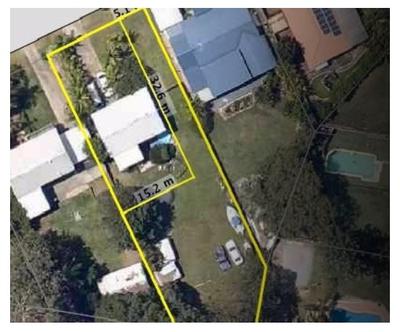Backyard Subdivisions Can Solve Our Housing Problems In 2017
by Swarup Dutta
(sourceable.net)
The different levels of government – state, federal and to an extent local – are blaming each other for the housing crisis.
Some blame banks and overseas investors, while others blame it on lack of new housing stock. Then all the governments gang up and say “yes we will release 3,000 new lots in the middle of nowhere but can’t do so till we get infrastructure funding in place, and we need an environmental assessment, fauna/flora audit..." The “why we can’t do it now” list grows so long that no new housing lots will issue till the next two governments get elected.
It may sounds cynical, but this same story happens every time we have a housing boom with record prices and profits - which all ends in the government pockets via taxes.
A property subdivision can be a solution on land already well serviced by infrastructure, services, schools and shops. So why reinvent the wheel and find greenfield sites when a fast solution is in our very own backyard? The blame game will stop at the state and federal levels, but sadly it is less likely to end when it comes to local government.
Councils need to understand that people need accommodation in Victoria, and more so in developed urban places. While trees are nice to have, trees should not deny people living in areas established suburbs. Hurdles - mostly academic - can be simplified, and fast planning approvals will create jobs in construction and get the economy buzzing in the real world. We won’t have to rely on export markets and iron prices to create new jobs.
So what can councils and planning strategists offer to ease the housing shortage?
Neighbourhood character: The world is changing and unless the streets are lined with quality (not 1970s) heritage homes, it makes sense to abandon the one-rule-suits-all-sites neighbourhood character demands. Neighbourhood character is not about mimicking the past. In one municipality that was not classified as inner city, even though four houses would be allowed on a lot in a Neighbourhood Residential Zone, it would have been impossible to develop land into four dwellings. This is because in that municipality, 35 per cent garden space is required on ground level and a recently completed neighbourhood character study revealed the municipality was overwhelmingly occupied by detached single level modest dwellings with one crossover. It was determined that should set the pattern for future housing, though a drive through the streets would show most of the houses were in poor order and ready for new life.
Garden spaces: A site that was designed for seven units with reverse living and got verbal support from a different council would face problems if the 35 per cent garden area were enforced. The site is close to an Activity Zone and council wants higher density. But the new minimum garden area requirement would force new developers to reduce the seven units to five. There goes two families who might have resided in one of those units. And the cost of each unit rises because the land component will now be divided between five dwellings rather than the preferred seven.
Backyard scape: Some councils have a silent policy not to support a double storey home in the backyard, and at least one council has that policy gazetted. That means a backyard which could yield a family home will now become a studio/student living accommodation whose occupant will not use the local primary schools.
Double crossovers and garages: What have some councils got against two driveways on a site or two garages facing a street? These councils want garages to be tucked (hidden) from view. And these councils encourage green travel but refuse to grant parking dispensations. If one can design so that one-off street parking space is not lost and the front yard is permeable with some appropriate landscaping, then a duplex or a three-unit development with two driveways makes economical use of the land. But some councils are repeat offenders when it comes to refusing such applications and regularly appear at the VCAT - a burden on the limited resources of the tribunal. And worse still, if one describes the neighbourhood character policy, it would be evident that most of the detached dwellings on the street have their garages facing the street
Deadlines: 60 days to grant a permit or councils face penalties. And if a council loses at VCAT, then it must pay the legal costs of mum and dad home owners who want to release their backyards to new home buyers, and maybe pay damages.
Join in and write your own page! It's easy to do. How? Simply click here to return to News portal.



